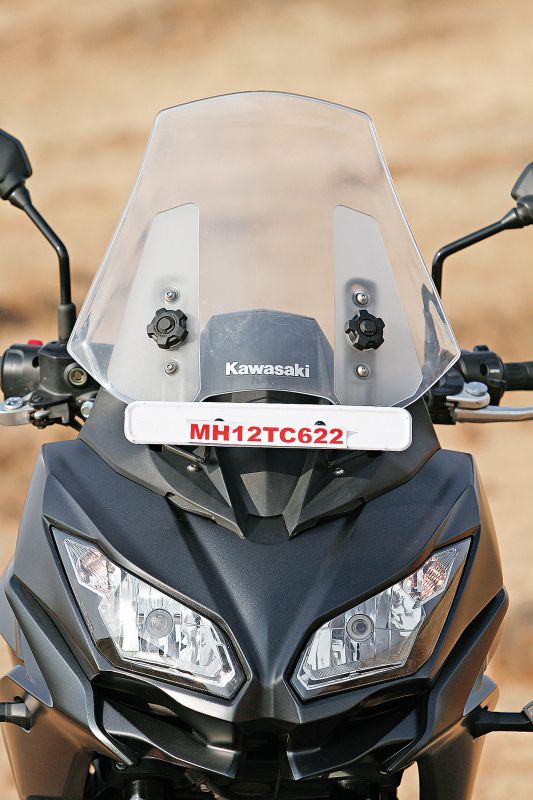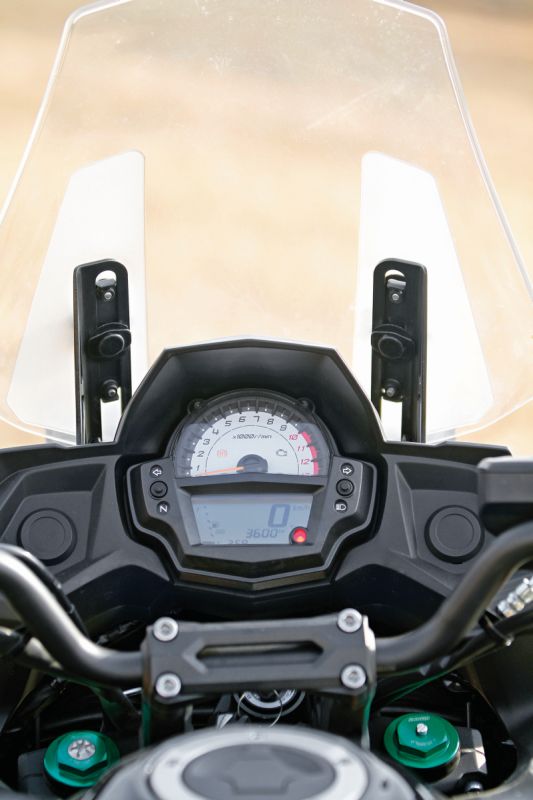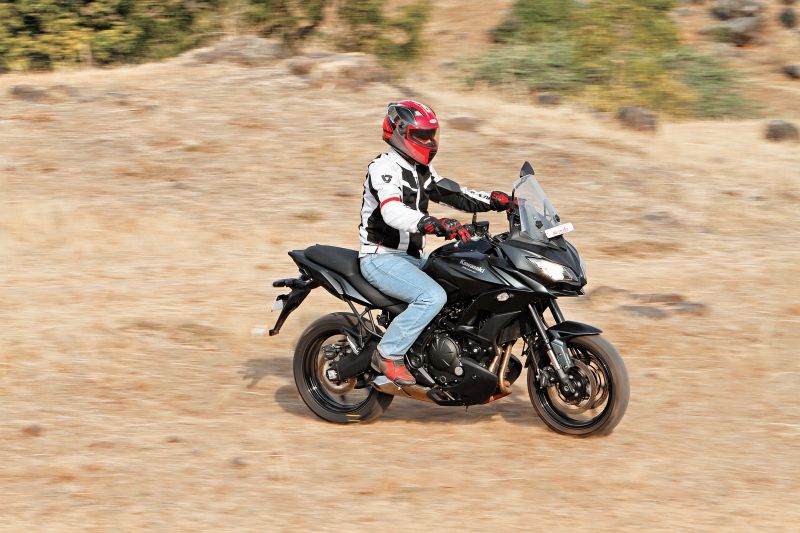 Visually, there’s very little to distinguish the smaller Versys from its larger sibling, the Versys 1000 LT, which, of course, is a litre-class machine as its name suggests. The smaller bike sports the same 650-cc unit as in the Ninja 650, but we’ll get to that in a bit. Back to the visuals, it’s only when you look at the bike closely that you realise that this is slightly more compact, the 1000 badging is missing and so are two exhaust pipes (the Versys 1000 has an in-line four while the 650 is a parallel twin). Dimensionally, the Versys 650 measures 2,164 mm in length, 841 mm in width and 1,399 mm in height. Saddle height of the Versys 650 at 840.74 mm is identical to that of the Versys 1000, so shorter riders may have a bit of an issue with getting a sound footing from the saddle. Even for someone of my height (I’m just a tinge over six feet), I could just about plant both my feet on the ground but with hardly any leverage to push the bike back out of the parking. The Versys 650 tips the weighing scale at 216 kg, which isn’t much heavier than other 650-cc touring motorcycles available in the country, but on the Versys 650, you can feel the weight in action a little more than on the other bikes.
Visually, there’s very little to distinguish the smaller Versys from its larger sibling, the Versys 1000 LT, which, of course, is a litre-class machine as its name suggests. The smaller bike sports the same 650-cc unit as in the Ninja 650, but we’ll get to that in a bit. Back to the visuals, it’s only when you look at the bike closely that you realise that this is slightly more compact, the 1000 badging is missing and so are two exhaust pipes (the Versys 1000 has an in-line four while the 650 is a parallel twin). Dimensionally, the Versys 650 measures 2,164 mm in length, 841 mm in width and 1,399 mm in height. Saddle height of the Versys 650 at 840.74 mm is identical to that of the Versys 1000, so shorter riders may have a bit of an issue with getting a sound footing from the saddle. Even for someone of my height (I’m just a tinge over six feet), I could just about plant both my feet on the ground but with hardly any leverage to push the bike back out of the parking. The Versys 650 tips the weighing scale at 216 kg, which isn’t much heavier than other 650-cc touring motorcycles available in the country, but on the Versys 650, you can feel the weight in action a little more than on the other bikes.
 Instrumentation comprises a single digital-analogue dial, not unlike that on the Ninja 650 but on the Versys 650, the dial is white backed and more compact. Swing a leg over the motorcycle and you find yourself planted on a well-padded and comfortable seat; not too firm, not too soft but just right for comfort on both short city rides as well as on mile-munching long-distance journeys. The handlebar to seat to footrest relation is upright, thus making it less tiring to ride over long distances. The windscreen can be adjusted by up to 60 mm, which is enough to make a big difference while touring. In fact, on our photo shoot when we lowered the screen to its least height (thus far I had been riding with the windscreen at its highest), the wind blast increased noticeably.
Instrumentation comprises a single digital-analogue dial, not unlike that on the Ninja 650 but on the Versys 650, the dial is white backed and more compact. Swing a leg over the motorcycle and you find yourself planted on a well-padded and comfortable seat; not too firm, not too soft but just right for comfort on both short city rides as well as on mile-munching long-distance journeys. The handlebar to seat to footrest relation is upright, thus making it less tiring to ride over long distances. The windscreen can be adjusted by up to 60 mm, which is enough to make a big difference while touring. In fact, on our photo shoot when we lowered the screen to its least height (thus far I had been riding with the windscreen at its highest), the wind blast increased noticeably.


